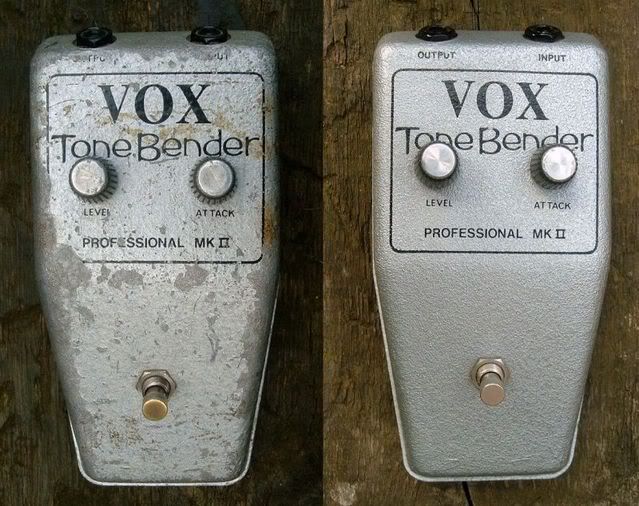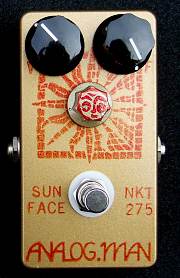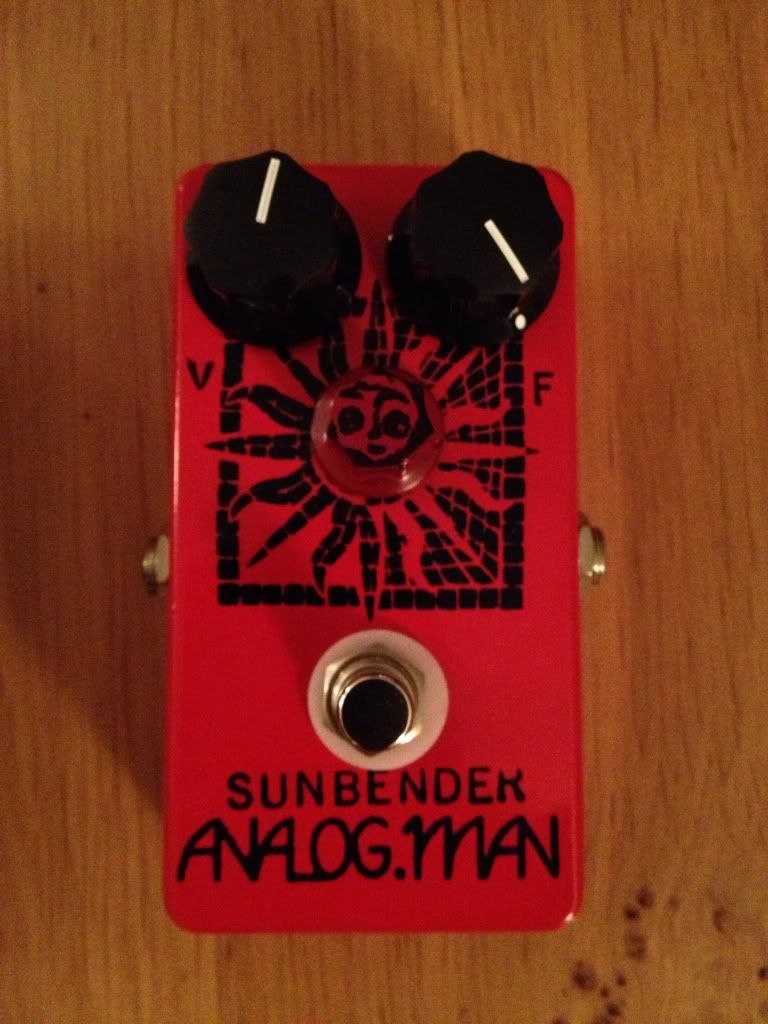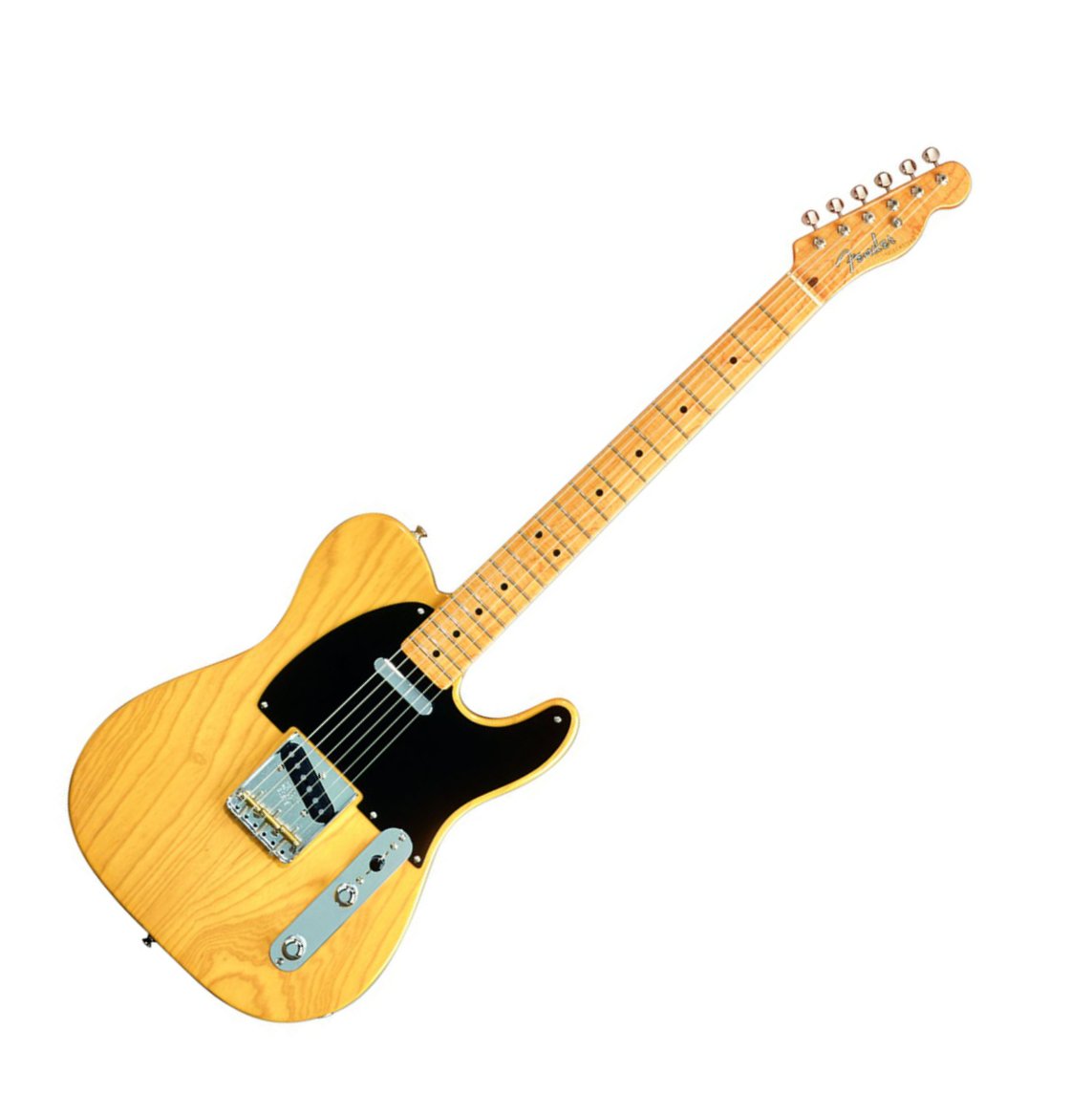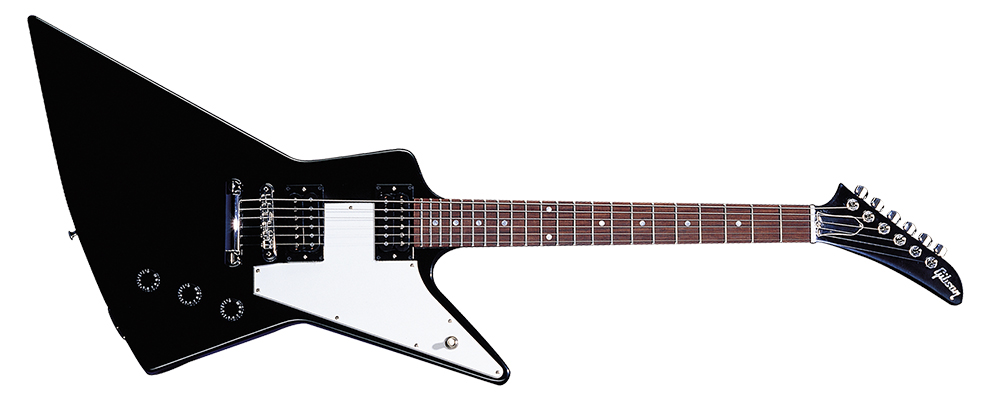Money: This is a big deal when you're buying vintage effects pedals. They will be anywhere from $300-$5000, which is a big investment for anything that isn't a car or a house (or sofa sectional). You'll have to be willing to spend money, but don't throw it away. It can be hard to find vintage effects that are in good condition, or even sound like you think they will sound. Other than that, the amount you should be paying for each pedal is determined primarily by what pedal it is. That's all you need to know generally about paying for stuff.
What exactly is "Vintage"?
I don't know what vintage is actually defined as, but generally any effects pedal older than 1980's is something I would consider vintage. That is, anything before the advent of digital processing in small effects boxes.
What effects should I buy vintage?
There are certain effects that sound great from the 60's and 70's, and others that needed a little more time to evolve before they really sounded any good. Here's an idea of what you should buy vintage and what you should stay away from:
YES:
Fuzz: Fuzz pedals are about the best effects pedal to buy vintage. Anything from the Sola Sound Tonebender to the Dallas Arbiter Fuzz Face to early versions of the Electro-Harmonix Big Muff are all readily available on websites like Ebay, Gbase, and Craigslist. Make sure they are in good condition and work, as with all gear, but be especially careful because certain fuzz pedals would not gain test their transistors and put any random pair in their pedal (Fuzz Faces). This could result in a nasty (in a bad way) sound. If it sounds good though, chances are it will for a while, and if it breaks, it's an easy circuit to fix!
Modulation: Like Phaser or Chorus or Vibrato. These are actually pretty cool if you can find them at a good price. Something like an old Electro Harmonix Chorus, MXR Phaser, or best of all a Univibe rotary chorus/tremolo unit. Beware though, these can be overpriced, and while they are good, they aren't great.
Compressors: While I'm not a fan of compression in general, if you like it, there are some great old Ross compressors as well as Orange Squeezer compressors available. They are very noisy, but they also sound pretty cool.
Boost: There's some great old boost pedals out there, the most famous being the Dallas Rangemaster. The coloursound powerboost is my favorite of the old boost pedals, but there are plenty of others to discover!
NO:
Overdrive: this isn't a strict "NO!", but more of a recommendation. The overdrive from a tube amp is the best, and nowadays we can simulate overdrive much better than we could in the 60's or 70's. My advice, don't buy old overdrive pedals, because frankly they won't sound that great, or a modern model will sound just as good.
Delay: There's a few exceptions, but generally old delay pedals have low delay times and take up a lot of pedalboard space. You can get a great analog delay today without having to pay through the nose for one that's from thirty-five years ago and sounds the same. There's only one exception to this rule, and that's the vintage Way Huge Aquapuss- one of the best delays I've ever used. Also, old tape delays are cool, but beware because the tape may have corroded or the components might be bad.
Other pedals aren't really significant enough to mention in that section, but pretty much the rule of thumb is that if it didn't exist at the time, don't look for a vintage model.
There's a lot of great vintage stompboxes, but there are some that rise above the others. I'll tell you what to look for in each unit to make sure that it functions correctly and won't break after a few weeks, as well as what price you ought to be paying for it or whether you should even be buying it!
Ok then, here we go:
The Dallas Arbiter Fuzz Face
This is undoubtedly the most iconic fuzz pedal in existence, maybe the most iconic stompbox period. Used by David Gilmour, Eric Clapton, Eric Johnson, George Harrison, Pete Townshend, and most famously Jimi Hendrix. There are two types of vintage fuzz faces, Germanium transistor and Silicon transistor. Both sound great; germaniums are more that classic Hendrix vibe while silicons are the edgy David Gilmour fuzz. Also, beware of Crest audio fuzz faces, which were a reissue that came out in the 80's. They still sound good, but they aren't the same as the old Dallas Arbiter ones. And just to reiterate, the sound of the vintage Arbiter units is the best noise one can make with a guitar... if you get lucky. Transistors used in fuzz faces were not gain matched, so they can sound awful if you get a fuzz face who's transistors are in a wild ratio. Also, if it gets too hot or cold, germanium transistor fuzz faces will cease to work correctly, and will sound like crap or not make any sound at all. Nonetheless, if you can find a good one, you will for sure be blown away by the tone this little smiley face produces. My advice, buy off Craigslist and go and test it out before you get it, or if you need to buy from Ebay or Gbase then at least ask for some recordings of the fuzz. Make sure they specify what guitar and amp they are using as well as the settings on the fuzz face so you can test it with a similar rig when it arrives to see if the sounds match up. The going price for these on Ebay, Craigslist, and Gbase is around $1000-$1500, the cheapest being $900. A modern alternative to the vintage fuzz faces is the AnalogMan Sunface Fuzz. I wrote a quick overview of it in my fuzz pedals buying guide, so check that out if you get the chance. Don't buy a Dunlop fuzz face! They sound ok, but nowhere near the original fuzz faces! Ok, that's all for the fuzz face.
The Sola Sound Tonebender MKII/Marshall Supa Fuzz/Vox Tonebender Professional MKII/RotoSound Fuzz Box/JHS Zonk II
Get ready, here comes a lot of pictures. Shown in order listed above-
Wow, that's a lot of models, but guess what? They're all the same pedal! The circuit was manufactured for five different companies and was retailed extensively. This is a great fuzz, and I'm not just saying that because it's Jimmy Page's favorite! It's gritty, fuzzy, and can be very thin but also very thick. With two controls it's very hard to go wrong. They are expensive though. I see most Tonebenders running around $1500 on the internets these days, sometimes even more for ones that are in great condition. They were also Germanium fuzzes, so watch out for faulty transistors or other broken parts. If you don't want to pay that much money for the sound, check out the Analogman Sunbender Fuzz, another great replica with modern tweaks from King Analogman.
The Colorsound Powerboost
The Powerboost is one of the best old boosts to not be the Dallas Rangemaster. It's got a darker and fuzzier character, and can get some pretty wild tones from your amp, but also some cleaner/crunch sounds. The two separate treble and bass controls rather than the simple tone control allow you to significantly change the character of the boost. It is 18v powered, so you'll want to be sure you use both batteries because it gives it WAY more headroom. David Gilmour is among the professional users of the Powerboost, having used it on Dark Side of the Moon, Wish You Were Here, and other iconic Pink Floyd albums. I haven't seen one online for a long time, but if I can remember it was somewhere around $1500. However, you can buy one of the reissues for around $400, so if you don't want to wait around for a vintage one to show up online (which is perfectly reasonable, by the way) then it's fine to pick up one of the reissues. I own one personally, and operating in 18v power, these do their vintage counterparts absolute justice.
The MXR Phase 90
So let me begin by saying that a lot of fascinating (albeit unnecessarily overcomplicated) lore surrounds this phase stompbox produced from 1973-1982 by the MXR effects company. One of the best phase pedals ever created, the MXR Phase 90 is a testament to the phrase, "less is more". With just one knob and thankfully no complex internal trimpots, this pedal manages to be versatile and tasteful while also being easy to use. I've seen my share of phaser units and for me I'm not always sure I want to pick between two or four or six or eight or ten or even twelve stage phasing. The Phase 90 limits you to a comfortably warbley four, which for my taste is just the tone to satisfy my phasing needs. There are two types of vintage Phase 90's, these being the above shown "script" logo phasers, and the later produced "block" logo phasers. They are essentially the same pedal with a few minor tweaks, but the block ones go for a lot less on eBay because they are somehow "not as vintage" and that makes them less valuable. There are also reissues of the Phase 90 produced by Dunlop who now owns the MXR brand name. The forerunner of these is the relatively inexpensive Phase 90. To the best of my knowledge, it essentially stays true to the original Phase 90 circuit, with a few component values changed. There is one resistor that can be replaced in order to remove some of the unwanted midrange gain associated with these reissues, but it's not a necessary modification. The bonus of the reissues is they are true bypass and also have an added LED and 9v power jack. This all being said, the script logo vintage Phase 90's will go for around $350, the block logos for $150, and the new block logo reissues for around $50, all of this being on eBay. I personally wouldn't pay that much money for the script reissue, but if you can snag a block logo stompbox, that would be a good situation to be in. I own a reissue and I use it regularly on my board, but I'm also not somebody who uses phaser a lot in general, so it suits my needs for the right price.
The Dallas Rangemaster
Probably the most legendary vintage effects unit after the Fuzz Face and the Tonebender, the Dallas Rangemaster is actually not a pedal. Rather, you plug your guitar into it and it has a cable that runs out the back to the rest of your rig. You switch it off or on, so it's generally a set and forget sort of device. All I'm going to say about the tone is that it will blow your ears off of the sides of your head. It's a powerful, powerful boost that adds a lot of dirty coloration to your signal. Just listen to Eric Clapton or Keith Richards, both users of the Rangemaster, and you'll know what I'm talking about. These are very expensive though, typically upwards of $2000. In my opinion, I wouldn't invest in it unless you're using it for recording purposes, because I like to have the option to easily turn off my effects while gigging with them. It's also a noisy unit, so that could cause some issues (not if you're playing loud enough and know how to work your guitar's volume pot). These issues are what makes this a low priority buy for me. I would rather invest a tenth of the cash in Analogman's clone, the Beano Boost. That being said, it does sound badass, so if you spring for it I wouldn't disapprove.
The Shin ei/Univox Univibe
Probably one of the shoddiest looking rusty pieces of metal out there, the UI on the Univibe is not gloriously polished, but it's the sound that's what you're going for with this one. The warbley and swirly tone of the Uni Vibe has left it's mark on tracks like Pink Floyd's "Breathe" and Jimi Hendrix's "Machine Gun", to name just two. These are super cool, and super vintage, if that's even an expression, so if you can get one just to have around and pull out to make some cools sounds then you really should. But, they're sort of expensive, so if you won't use it ever and it'll break the bank, your investments are probably better placed elsewhere. These run about $1500 on eBay and can be hard to come by. Chances are somebody will always be selling one for the right price though.
Well, that's all the effects I can think of worth mentioning right now, but I'm sure there will be more vintage effects posts to come... The world of vintage effects is an endless cesspool of transistors and 500k linear pots so if you really want to get into this stuff, I recommend learning some basic electrical engineering first. That's all, hope this was of some service to you!
The Colorsound Powerboost
The Powerboost is one of the best old boosts to not be the Dallas Rangemaster. It's got a darker and fuzzier character, and can get some pretty wild tones from your amp, but also some cleaner/crunch sounds. The two separate treble and bass controls rather than the simple tone control allow you to significantly change the character of the boost. It is 18v powered, so you'll want to be sure you use both batteries because it gives it WAY more headroom. David Gilmour is among the professional users of the Powerboost, having used it on Dark Side of the Moon, Wish You Were Here, and other iconic Pink Floyd albums. I haven't seen one online for a long time, but if I can remember it was somewhere around $1500. However, you can buy one of the reissues for around $400, so if you don't want to wait around for a vintage one to show up online (which is perfectly reasonable, by the way) then it's fine to pick up one of the reissues. I own one personally, and operating in 18v power, these do their vintage counterparts absolute justice.
The MXR Phase 90
So let me begin by saying that a lot of fascinating (albeit unnecessarily overcomplicated) lore surrounds this phase stompbox produced from 1973-1982 by the MXR effects company. One of the best phase pedals ever created, the MXR Phase 90 is a testament to the phrase, "less is more". With just one knob and thankfully no complex internal trimpots, this pedal manages to be versatile and tasteful while also being easy to use. I've seen my share of phaser units and for me I'm not always sure I want to pick between two or four or six or eight or ten or even twelve stage phasing. The Phase 90 limits you to a comfortably warbley four, which for my taste is just the tone to satisfy my phasing needs. There are two types of vintage Phase 90's, these being the above shown "script" logo phasers, and the later produced "block" logo phasers. They are essentially the same pedal with a few minor tweaks, but the block ones go for a lot less on eBay because they are somehow "not as vintage" and that makes them less valuable. There are also reissues of the Phase 90 produced by Dunlop who now owns the MXR brand name. The forerunner of these is the relatively inexpensive Phase 90. To the best of my knowledge, it essentially stays true to the original Phase 90 circuit, with a few component values changed. There is one resistor that can be replaced in order to remove some of the unwanted midrange gain associated with these reissues, but it's not a necessary modification. The bonus of the reissues is they are true bypass and also have an added LED and 9v power jack. This all being said, the script logo vintage Phase 90's will go for around $350, the block logos for $150, and the new block logo reissues for around $50, all of this being on eBay. I personally wouldn't pay that much money for the script reissue, but if you can snag a block logo stompbox, that would be a good situation to be in. I own a reissue and I use it regularly on my board, but I'm also not somebody who uses phaser a lot in general, so it suits my needs for the right price.
The Dallas Rangemaster
Probably the most legendary vintage effects unit after the Fuzz Face and the Tonebender, the Dallas Rangemaster is actually not a pedal. Rather, you plug your guitar into it and it has a cable that runs out the back to the rest of your rig. You switch it off or on, so it's generally a set and forget sort of device. All I'm going to say about the tone is that it will blow your ears off of the sides of your head. It's a powerful, powerful boost that adds a lot of dirty coloration to your signal. Just listen to Eric Clapton or Keith Richards, both users of the Rangemaster, and you'll know what I'm talking about. These are very expensive though, typically upwards of $2000. In my opinion, I wouldn't invest in it unless you're using it for recording purposes, because I like to have the option to easily turn off my effects while gigging with them. It's also a noisy unit, so that could cause some issues (not if you're playing loud enough and know how to work your guitar's volume pot). These issues are what makes this a low priority buy for me. I would rather invest a tenth of the cash in Analogman's clone, the Beano Boost. That being said, it does sound badass, so if you spring for it I wouldn't disapprove.
The Shin ei/Univox Univibe
Probably one of the shoddiest looking rusty pieces of metal out there, the UI on the Univibe is not gloriously polished, but it's the sound that's what you're going for with this one. The warbley and swirly tone of the Uni Vibe has left it's mark on tracks like Pink Floyd's "Breathe" and Jimi Hendrix's "Machine Gun", to name just two. These are super cool, and super vintage, if that's even an expression, so if you can get one just to have around and pull out to make some cools sounds then you really should. But, they're sort of expensive, so if you won't use it ever and it'll break the bank, your investments are probably better placed elsewhere. These run about $1500 on eBay and can be hard to come by. Chances are somebody will always be selling one for the right price though.
Well, that's all the effects I can think of worth mentioning right now, but I'm sure there will be more vintage effects posts to come... The world of vintage effects is an endless cesspool of transistors and 500k linear pots so if you really want to get into this stuff, I recommend learning some basic electrical engineering first. That's all, hope this was of some service to you!



